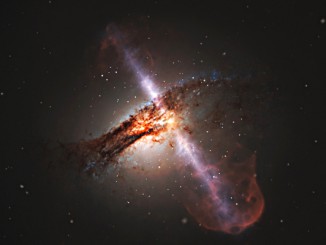
NASA/ESA Hubble Space Telescope


Brightest early galaxy likely to contain first generation stars discovered
Astronomers using the several of the largest telescopes on Earth and in space have discovered CR7, a galaxy three times brighter than the brightest distant galaxy in the early universe known up to now. The scientists also found strong evidence that examples of the first generation of stars lurk within it.

ALMA’s detailed view of star formation in the distant universe
The Atacama Large Millimetre/submillimetre Array has produced a spectacularly detailed image of a distant galaxy known as SDP.81 that is being gravitationally lensed. The image shows a magnified view of the galaxy’s star-forming regions, the likes of which have never been seen before at this level of detail in a galaxy so remote.




Dark matter even darker than once thought
Astronomers using observations from the NASA/ESA Hubble Space Telescope and NASA’s Chandra X-ray Observatory have studied how dark matter in clusters of galaxies behaves when the clusters collide. The results show that dark matter interacts with itself even less than previously thought, and narrows down the options for what this mysterious substance might be.
